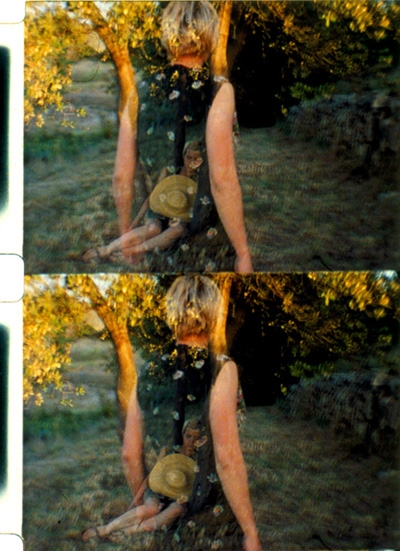
2000, 16 mm, colour, silent, 3min.
An idyllic summer scene: a sleeping woman reclines between two trees, a straw hat covering her knees and her double circling her form. The woman's figure is somewhat unclear, as if her image had faded with time, as if this were a memory from the distant past. But who is remembering whom? The woman stands up and gazes into the camera intently, and the background seems to be a theatre backdrop. Again and again, the two ghostly figures (in fact the same woman) flit past, apparently looking for something or examining their surroundings closely, without ever meeting. The last image resembles the first, though it is possible that the two women have changed places.
Et In Arcadia Ego is a "painterly" film, and even its title reinforces this impression. This formula and its variations "conjure up a vision of unsurpassable happiness which is turned backwards toward the past", wrote Erwin Panofsky in his essay Et in Arcadia Ego. Poussin und das Elegische (1936), which traces the long tradition and gradual change in the significance of the Arcadia motif in fine arts from memento mori to a symbol of "melancholy pregnant with memory".
Isabella Reicher
